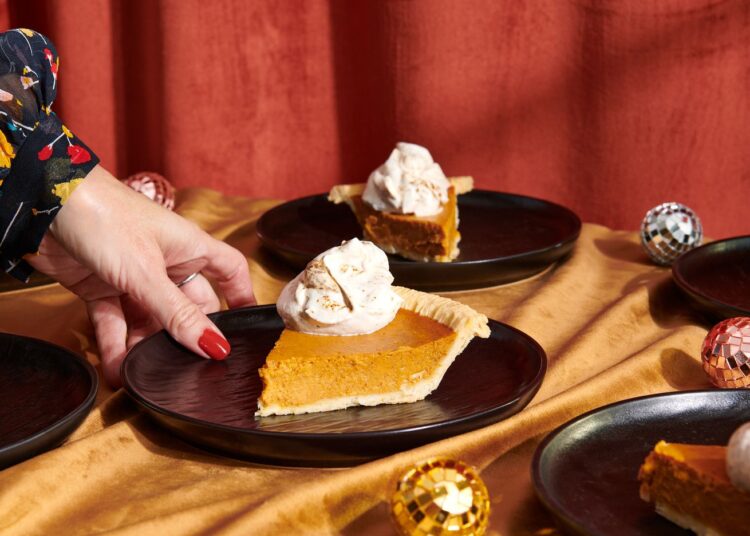Dina Ávila/Eater
It’s an easy way to level up homemade desserts
This post originally appeared in the September 26, 2022 edition of The Move, a place for Eater’s writers and editors to reveal their recommendations and pro dining tips — sometimes thoughtful, sometimes weird, but always someone’s go-to move. Subscribe now.
There is obvious pleasure in plain ol’ whipped cream, be it dolloped over a mousse or pie, smothered with hot fudge and sprinkles, or squirted from a Reddi-Wip tube straight into a gaping mouth. Whipped cream, once referred to as “milk snow” by the French and beaten into buoyancy with a tree branch rather than a whisk, is generally made of heavy cream, just a dash of sugar and a bit of vanilla. I am the first to pile my confections high with extravagant amounts of the stuff. Recently, however, I began to wonder why this luscious topping remains hopelessly straightforward in nearly all desserts. Yes, we all know the proverb if it ain’t broke don’t fix it. But, if we’ve got sweet corn ice creams galore and new iterations of milky panna cottas on every menu in town, why aren’t we playing more with this most iconic dairy? I decided to give it a whirl, melding ginger powder with heavy cream until the result tasted lively and sharp, and I was properly convinced that flavored whips might be the next great fad.
It is preposterously easy to infuse a whip with flavor. Whipped cream is a perfect tabula rasa, a fatty and decadent canvas for flavor experimentation and combination. Of course, there are all manner of extracts that can enliven heavy cream, but I prefer whole ingredients, like orange peel and Meyer lemon zest, or even espresso powder and malted milk. With these, you can practice a cold infusion, a term that sounds vaguely clinical but really means dumping one ingredient into another and letting them commingle. You might, for example, chop some Thai basil leaves and let them sit for a day in refrigerated cream. Strain out the solids after a fridge rest and taste to make sure the flavor is strong enough.
You might also bypass infusion altogether and throw spices (cardamom or nutmeg, paprika for the daring) straight into the whip. Perhaps you add a tablespoon of sesame oil for a nutty note, or a bit of tamari for a savory finish. You could consider folding in some jam for a vibrant color and fruity end. For the silkiest whipped cream, I use a whisk attachment and beat at low speed, gently increasing as froth builds. Then, as I learned as a pastry cook, once the mixture reaches soft peaks, I finish the last bit of whipping by hand so that the cream remains supple.
The infusion process is nearly effortless, but always yields a decadent result to pair with a preferred confection. How about a blueberry buckle with thyme whipped cream? Or a pillowy peanut butter cream piled atop a raspberry galette? Maybe a hojicha whip served simply with fresh apples. Move over Chantilly cream. Next time you’re in need of a showstopping topping, a garnish worth swooning for, I urge you toward a whip that is more whimsical, creative, and unexpected. As M.F.K. Fisher might well have written, it’s high time that we consider the cream.
Tanya Bush is a freelance baker and writer based in Brooklyn. She is also the co-founder of Cake Zine, an independent print publication exploring society through sweets.














